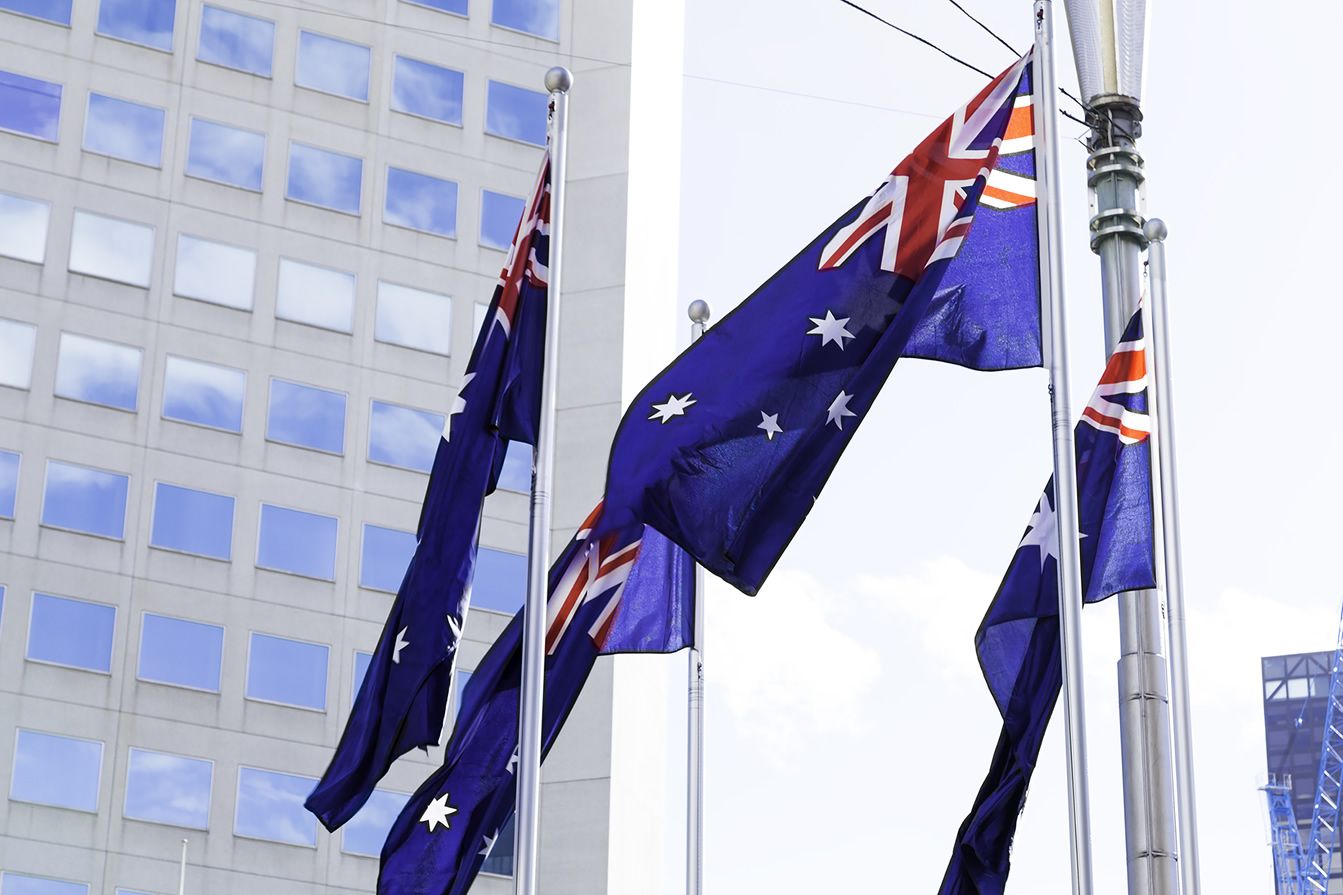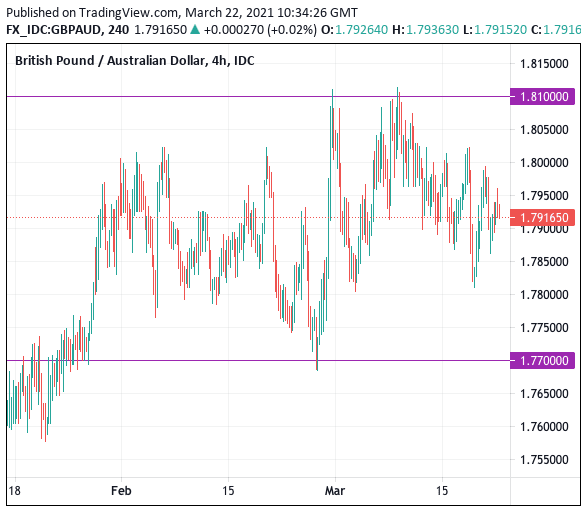Aussie Dollar Could Remain Supported into April
- AUD forecast to remain supported on crosses by Westpac
- April could see support from equity divident payouts
- GBP/AUD and AUD/USD remain caught in broad sideways ranges

Image © Adobe Images
- GBP/AUD spot rate at publication: 1.7924
- Bank transfer rates (indicative guide): 1.7296-1.7420
- Transfer specialist rates (indicative): 1.7460-1.7798
- Get a specialist rate quote, here
- Set up an exchange rate alert, here
The Australian Dollar will maintain an outperformance on global foreign exchange markets say analysts at a leading Australian lender and investment bank.
Foreign exchange analysts at Westpac say that April should see the Australian Dollar well supported, although headwinds to the global commodity market could be a limiting factor to any advances.
"With crude prices leading commodities lower, the risks of further weakness for the Australian Dollar are clear to see," says Richard Franulovich, Head of FX Strategy at Westpac, in a briefing to clients.
"However, with dividend conversion season continuing into April in Australia, the Australian Dollar should remain well supported on dips," he adds.
In February analysts at JP Morgan said a potential "dividend supercycle" for Australian equities was possible, given improved operating conditions for Australia-based firms.
Indeed, Australian dividend payouts are exceeding analysts expectations in the current earnings season, which could support foreign demand for Australian assets.
"With operating conditions improving across sectors, boards have started re-instating more generous payout ratios," said JP Morgan in a mid-February client briefing. "We believe an Australian dividend supercycle is in the offing."
The call comes at a time that the Australian Dollar struggles to make significant headway against the Pound and U.S. Dollar, two currencies that have had a good 2021.
The Pound-to-Australian Dollar exchange rate (GBP/AUD) maintains a broad sideways-oriented trend, in place since late January, with ~1.81 defining the upper end of the range and ~1.77 the lower end.
GBP/AUD is quoted at 1.1920 at the start of the new week and remains relatively well supported considering the pair started the year at 1.7416.
Above: A rough sketch of the band that GBP/AUD has traded in during much of 2021.
The Australian-to-U.S. Dollar exchange rate (AUD/USD) is meanwhile back at 0.7730 at the time of writing on Monday, placing the exchange rate in the middle of a multi-week range that has come to define AUD/USD in 2021.
Foreign exchange strategists at Citi have meanwhile said they retain a bullish approach to the Australian Dollar outlook, a view they say is further vindicated by strong Australian employment data out last Thursday.
Employment increased 88.7k in February, against the 30k the market was looking for.
"We remain bullish AUD from a structural perspective and expect further appreciation following the dovish Fed overnight, which could asymmetrically boost commodity currencies," says Kurran Tailor, an analyst with Citi.
Australian employment is now back above its March 2020 level and near its pre‐Covid crisis level which leads markets to question how long the Reserve Bank of Australia (RBA) can continue with its cautious approach to monetary policy.
{wbamp-hide start} {wbamp-hide end}{wbamp-show start}{wbamp-show end}
Foreign exchange analysts say that should the market start to bring forward expectations for when the RBA will raise interest rates, the Aussie Dollar will be supported.
However, the RBA will be loathe to withdraw support to the economy too soon and risk having Australian bond yields rise and potentially choke off economic growth.
The RBA will therefore likely point to the key underemployment rate as remaining elevated and consistent with considerable 'slack' in the economy.
Economic slack refers to the ability of an economy to add more jobs without risking pushing up inflation.
The RBA will therefore want to see the employment situation improve markedly over coming months before they stop pushing back against higher bond yields and the stronger Australian Dollar they would likely stoke.

